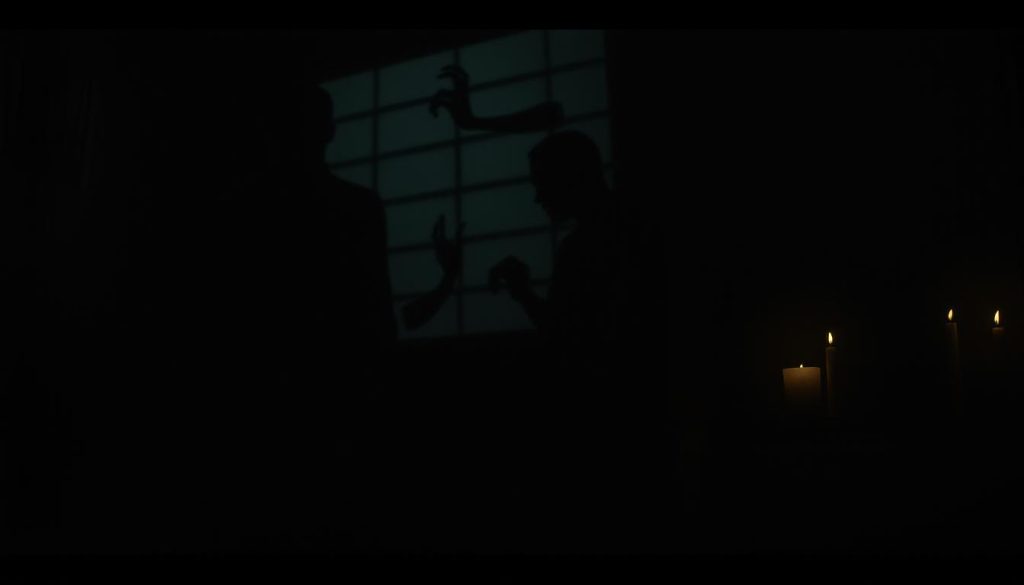We open a calm portal. This beginner-friendly intro promises a grounded, modern path to meeting parts we hide. Jung called these disowned elements a hidden force inside us. Bringing them into view can ease anxiety and stop patterns that hold us back.
Expect clear, practical steps. We’ll outline origins in childhood, everyday triggers, projection, and simple tools like journaling, meditation, and dream work. These steps help us become more honest, creative, and whole.
Meeting disowned parts can feel intense. With centering, heart-breathing, and kind curiosity, we stay safe and steady. This guide blends Jungian wisdom with modern apps and gentle practices so the inner journey feels useful and alive.
Beginner’s Overview: Why Shadow Work Matters Right Now
The world feels louder; tending inner material makes us less reactive and more present. In turbulent times, a steady inner practice builds resilience and clearer choices. We move through stress with more calm.
Immediate benefits include more energy, fewer spirals, clearer boundaries, and momentum toward growth without spiritual bypassing. Small daily minutes add up. Five minutes of journaling or a short meditation can shift patterns over weeks.
Ignoring hidden parts often creates repeating cycles in life. Making unconscious material conscious interrupts those loops. This supports emotional development, creativity, and healthier relationships.
Start safely: center your nervous system, practice self-kindness, and keep pace humane. Meeting denied parts can feel uneasy, but that discomfort is a doorway to authenticity and real freedom.
We suggest one simple step to get started: pick a practice, a time of day, and a place to sit. Invite curiosity, not pressure, and let awareness do most of the work.
Defining the Shadow: The Hidden Side of the Psyche
Beneath our polite mask sits a cluster of traits we quietly tuck away. We call this inner constellation the shadow, a mix of anger, envy, courage, and bright talents we dare not claim.
The persona is our polished social face. The shadow holds the self we hid to be liked, safe, or useful. In the psyche, anything outside awareness still moves the gears of behavior.
Not all in the shadow is bad. The golden parts—creative gifts and boldness—often live there. We then project them onto others, or admire qualities we secretly own.
You’ll notice signs: rigid judgment, sudden attraction, or jealousy. These are signals that disowned aspects are asking for attention.
Try a brief self-check: what do you criticize, and who do you idolize? Both clues point to hidden aspects of your personality.
Shining attention, like steady light, helps integrate these pieces. Naming patterns calms the body and lets us bring more of ourselves into balanced work and daily life.
How the Shadow Forms in Childhood and Development
Early family rules quietly shape which feelings get to live out loud and which get tucked away. As children, we adapt to keep safety, belonging, and esteem. When a parent or teacher shames an emotion, that part often goes into hiding to preserve attachment.
Robert Bly called this an invisible bag—a place where unwanted parts are stored. These disowned parts do not vanish. They move into the personal unconscious and become a guiding force under the surface.
Development leaves clear marks. A child scolded for being “too loud” can grow into an adult who struggles to take up space in life and in relationships. Family rules and unmet needs train the psyche to exile anger, appetite, sensuality, or joy into that inner storehouse.
Those hidden parts still steer choices, attractions, and patterns at work and at home. Try a gentle reflection: recall a moment you learned to hide a feeling. That memory often points to a current trigger.
We did what we needed to survive as a child. Now our grown self can invite those parts back with compassion and attention.
Carl Jung’s Map of the Psyche for Beginners
Carl Jung offered a tidy sketch of how our inner world arranges itself. Think of it as a simple map to guide gentle inner work.
The map names three everyday players: the ego (our day-to-day “I”), the persona (roles we wear), and the unconscious (what hides out of sight). This plain view keeps things usable, not mystical.
Key archetypes appear on the map. The shadow holds disowned feelings and talents. Anima and animus show inner feminine and masculine dynamics that tend to surface in relationships. The Self is the deeper center, a compass toward wholeness.
When we identify only with the persona, personality becomes one-sided. Integration reduces that limp. Meeting the shadow is an early gate on the route to the Self.
Try a quick drawing: sketch circles for ego, persona, shadow, and Self. Label a few aspects you notice. This simple exercise makes the model feel real and kindles attention to each part psyche.
What Is Shadow Work? Exploring the Dark Side of the Psyche
A simple pause at a trigger can unfold into a deep shift in how we live. Shadow work names the process of bringing disowned traits from the unconscious into clear view and welcoming them back into the self.
We can think of this as two linked stages. First comes awareness: spotting patterns, projections, and repeated triggers. Then comes integration: practicing new choices so that hidden energy becomes usable in daily life.
Integration changes reactions. When we pause, feel, and choose differently, reactivity softens. That brings steadier nerves, more options, and clearer boundaries.
This process aims for wholeness inside the psyche. It balances polarities so the Self can lead with more wisdom. The path asks for honesty, patience, and responsibility toward others.
Setbacks are normal. Repetition rewires habit. Track small wins—a kinder reply, a firmer limit—as proof the work is working.
Common Ways the Shadow Manifests in Everyday Life
Hidden patterns often show up as tiny daily habits that quietly steer our choices. You might see them as a procrastination loop, a drama magnet, or an “I’m fine” mask over boiling emotions.
Classic signals include jealousy spikes, codependency, passive-aggressive jabs, and that self-sabotage right before success. These behaviors keep repeating until they’re met with attention.
Ignored parts gain power. They steer decisions with others and shape our lives without our consent. Anxiety or depression can be signals that unprocessed material needs care.
We normalize this: everyone has patterns. The choice is to meet them with curiosity or keep fighting in the dark. These parts often protected us once. Now they need updated instructions from our adult self.
Try a one-month “pattern map”: note triggers, body sensations, thoughts. Awareness alone begins to shift behavior. Pick one manageable pattern to work on first. Progress often looks like shorter triggers, faster recoveries, and kinder repair with people we love.

Projection 101: Seeing Your Shadow in Other People
Sometimes our loudest judgments carry a secret echo from inside us. Projection happens when a quality we hide shows up in someone else like a mirror. Jung described how what we deny appears outside, as if it belongs to a neighbor.
Example: hating arrogance in people can point to disowned ambition inside us. Resenting neediness may reveal our own unattended needs. These flips show how the shadow shapes perception.
Projection warps relationships. Neutral acts become charged stories through our personality lens. A fast check helps: what exactly did someone else do, and what did my mind add?
After conflicts, try this short practice: write what you accused others of, then ask where that lives in you now or in your past. Curiosity toward your shadow self softens certainty and opens choice.
As we integrate, people feel easier to be around. Sharing this lens with loved ones can create cleaner communication and less reactivity. Projection work frees energy so we can show up for real work in relationship and life.
Spotting Your Triggers and Repeating Patterns
Triggers are not failures; they are invitations to bring attention to a part that needs listening. When heat or collapse arrives, pause. Name the feeling and ask which parts lit up.
A helpful rule: “when it’s hysterical, it’s historical.” Big charge often points to older material. Over time, we learn the pattern by noting where intensity keeps returning.
Track repeating patterns in simple ways. Take short notes after a conflict, tag your calendar, or save a screenshot of moments that sting. These small records reveal the same things happening again and again.
Try an emotional inquiry: name the feelings, the story it carries (like “I’m not enough”), the body sensations, and the earliest matching memory. Let the sensation finish in the body; that completion is part of the process.
Ask, “What does this part need now?”—space, breath, movement, or a boundary. Celebrate tiny wins. A few extra seconds before reacting is real work, and it is a powerful way to integrate hidden material.
Key Benefits of Doing Shadow Work for Growth and Well-Being
Bringing buried material into view often unlocks fresh energy. That release can feel simple and practical: more pep, clearer focus, and less somatic tension that once drained us.
We notice inner strength build. Less defending a persona means more ease being our self at home and at work. Confidence settles in as habits change.
Relationships change too. With fewer projections, communication becomes cleaner. Repair lands deeper, and intimacy gains real safety.
Body and mind often follow. Releasing long-held emotion frees resources. Some people report less chronic pain or tighter shoulders as old charge unwinds.
Creativity returns. Energy once spent on hiding can flow into making — drawing, movement, writing — and that shift fuels growth across careers and daily lives.
Clarity is another gift: less ego swing, more accurate reading of situations. Integration cultivates maturity, steadier decisions, and a lot of small wins: a held boundary, a softer inner voice, fewer spirals.
Make it practical: name three benefits you want most. Let that list guide your next step in this gentle process.

Getting Started Safely: Foundational Tips for Beginners
We open with safety so curiosity can speak without alarm. Begin by taking a few steady breaths and feeling your feet or belly. This simple centering lowers ego resistance and helps you get started with ease.
Maitri means meeting parts with kindness. Harsh judgment backfires. Be friendly to whatever appears. Ask with soft curiosity: what needs my attention right now?
Try a short heart practice from Thich Nhat Hanh: place attention on the heart, breathe in while acknowledging it, and say “Thank you” on the out-breath. Use this before and after short sessions to regulate the nervous system.
Keep sessions small. Five to ten minutes, daily, builds momentum without overwhelm. Record discoveries in a journal to anchor insights before they fade.
Create a tiny ritual space—a light, a timer, gentle music—to signal that this process has your full presence. Consent matters: stop if you feel flooded. Move, breathe, or call a licensed helper when trauma or intense reactions appear.
Safety is not optional. It’s the foundation that makes true integration possible as we do this work together.
Core Practices to Integrate Your Shadow
Start with a tiny habit: notice one reaction this week and follow it like a curious detective.
Build a simple toolkit. Observe triggers, name the parts that show up, and gently map beliefs that keep patterns looping in the psyche.
Try emotional inquiry: name the feeling, the story it carries, and where you feel it in the body. Trace any past echoes that match.
Include short daily meditation sits for steadying. Apps like Insight Timer offer guided sessions that train nonjudgmental attention and calm.
Use dreamwork: set an intention before sleep and keep a notebook by the bed. Record images and feelings on waking for later reflection.
Play with stories and archetypes—tools such as Tav Sparks’ Movie Yoga help reveal hidden aspects through myth and film. Robert Johnson’s Inner Work offers active imagination and dream methods here.
Journaling options include Morning Pages to clear, Expressive Writing to process, and IFS-style dialogues to meet parts directly. Try inner child exercises to re-parent wounded responses with warmth and clear boundaries.
Practical rule: adopt one practice per week and stack slowly. Keep a journal index to track which practices help which parts. Integration is relational—these practices are the ways we learn to befriend our inner team.
Journaling for the Shadow Self: Prompts and Methods
Put pen to paper and let restless patterns speak without interruption or judgment. We treat the journal as a daily portal where hidden parts can talk freely.
Start with Morning Pages to clear mental clutter. Then use Expressive Writing to pour charged feelings into words. Keep the pen moving. Don’t edit.
Try an IFS-style dialogue. Write as “I” and let a named part reply. Make it real with images or nicknames. This builds relationship instead of shame.
For thinking traps, use Byron Katie’s four questions to test sticky beliefs. That cognitive tool helps shift reactivity and creates fresh choice in how we work with triggers.
Prompt clusters: recent triggers, judgments, resentments, envy, childhood memories, and people who fascinate or irritate you. Add value-mapping and letters you won’t send to move old emotion safely.
Begin with a simple ritual: breath, date, intention. Close gently—gratitude or hand on heart. Track key insights in a sidebar index so patterns show over time. Be kind to messy pages. This is the process working, and steady work changes everything.

Everyday Examples: How the Shadow Shapes Behavior and Relationships
Tiny everyday moments often carry a hidden script that steers how we act around others.
Scroll past a friend’s win and feel a sharp pang. Let say that sting hides scarcity or old grief rather than envy itself. Noticing that gives us a clue about a displaced part.
A late friend can spark furious irritation. That reaction often points to a control or rigidity part that equates timeliness with safety. The trigger tells more than the clock does.
Attraction can be a projection. Falling for a free-spirited partner may mean we’ve exiled our own desire for play and freedom. Repeating patterns—pursuing unavailable people—echo attachment wounds until we choose differently.
Critiquing someone else’s style sometimes reveals an inner masculine or feminine we’ve denied. Behavior at work will mirror home life. The shadow does not clock out when we leave the house.
Practice after any charged moment: write three feelings, the story you told, and which parts showed up. Use humor and humility—these patterns are human, and lightness helps integration.
Pick one relationship to practice new responses with and watch small shifts ripple through daily relationships and life.
When to Seek Support: Therapists, Coaches, and Safety Notes
There are clear signals that a trained person should join this inner conversation.
Come in sooner if you meet intense flashbacks, disassociation, self-harm impulses, or overwhelming triggers. These signs point to trauma pathways where clinical care helps keep you safe.
Therapists offer stabilization skills, containment, and tools to spot patterns we miss on our own. They help pace sessions so your nervous system can say yes. Ask about trauma training and parts-informed approaches when you interview a provider.
Coaches and mentors help with daily integration. They support habits, accountability, and practicing new behaviors with others between clinical sessions. This kind of support speeds learning and makes changes stick.
Keep a shadow journal to brief your helper. Notes save time and keep attention on what truly matters. Use simple resourcing tools: grounding, bilateral movement, breath cues, or a safe place ritual.
Relationships often heal faster with guidance because repair skills grow alongside insight. Sometimes we go solo. Other times we choose wise company. Both seasons belong in full lives.
Asking for help is strength. It honors your depth and protects the parts that need care. Take your time and follow your nervous system’s lead.
Myths and Misconceptions About Shadow Work
It’s easy to treat hidden parts like villains, but they often guard our greatest gifts. Many myths make us fear the shadows, so we avoid looking. That avoidance keeps useful energy out of sight.
Not only pain lives there. Bright talents, leadership, and desire sometimes hide as disowned aspects. Calling these the “golden” parts helps us invite them home with curiosity rather than blame.
Another myth says change should be instant. Real work is steady. Small daily choices rewrite habit over time, not overnight.
Some people confuse this path with spiritual bypassing — using light talk to skip real feeling. That detour keeps patterns stuck. Integration asks for tenderness and responsibility, not denial.
We do not aim for perfect behavior. The goal is your authentic self emerging more often. Progress looks like fewer emotional spikes, faster repair, and kinder inner stories.
Take a playful heart. Humor softens defense and makes deeper aspects feel less scary. Each corrected myth becomes a door to clearer understanding and a truer way of being in the world.

Further Learning: Books, Practices, and Tools to Continue Your Journey
Curating a small shelf of trusted reads and tools helps this inner journey feel less lonely and more practical.
Start with these guides: Robert Johnson’s Inner Work for dream and active imagination rooted in carl jung ideas. Add Byron Katie’s The Work to challenge sticky beliefs. Include John Sarno’s view on how repressed emotion links to physical pain for extra motivation.
Play with archetypes via Tav Sparks’ Movie Yoga. Turn a film night into a mirror for hidden parts. Use Insight Timer to hold a short daily sit. These practices build steadiness and clear habit.
Make a simple plan: one book, one practice, one weekly review in a journal. Track insights, wins, and patterns. Form a small peer circle to share notes and gentle accountability in your world.
We also love online helpers like www.mysticbolt.com for playful tools. Remember: development is cyclical. Revisit resources as new layers of shadow arise, and keep routines cozy—same chair, same time—so the mind learns to welcome this steady, kind work.
Bringing Light to the Dark: A Closing Invitation to Wholeness
Let this last pause be an offer: breathe, name one next step, and move forward gently. Small acts turn attention into change and make the inner journey feel doable.
Bringing light to hidden parts means acknowledging and accepting them. Integrating shadow happens through steady practice, kindness, and support when needed.
We invite a simple daily rhythm—breathe, notice, write, and choose. Over time your authentic self shows up more often in calmer choices and kinder self-talk.
Honor the parts that protected you. Thank them, update their jobs, and welcome their energy back into creativity. Reach for hands when you need them; walking together makes this work gentler and more joyful.
One small practice: name a single next step and take it before the day ends. We step forward with you, curious and courageous, bringing more light—one integrated breath at a time.
